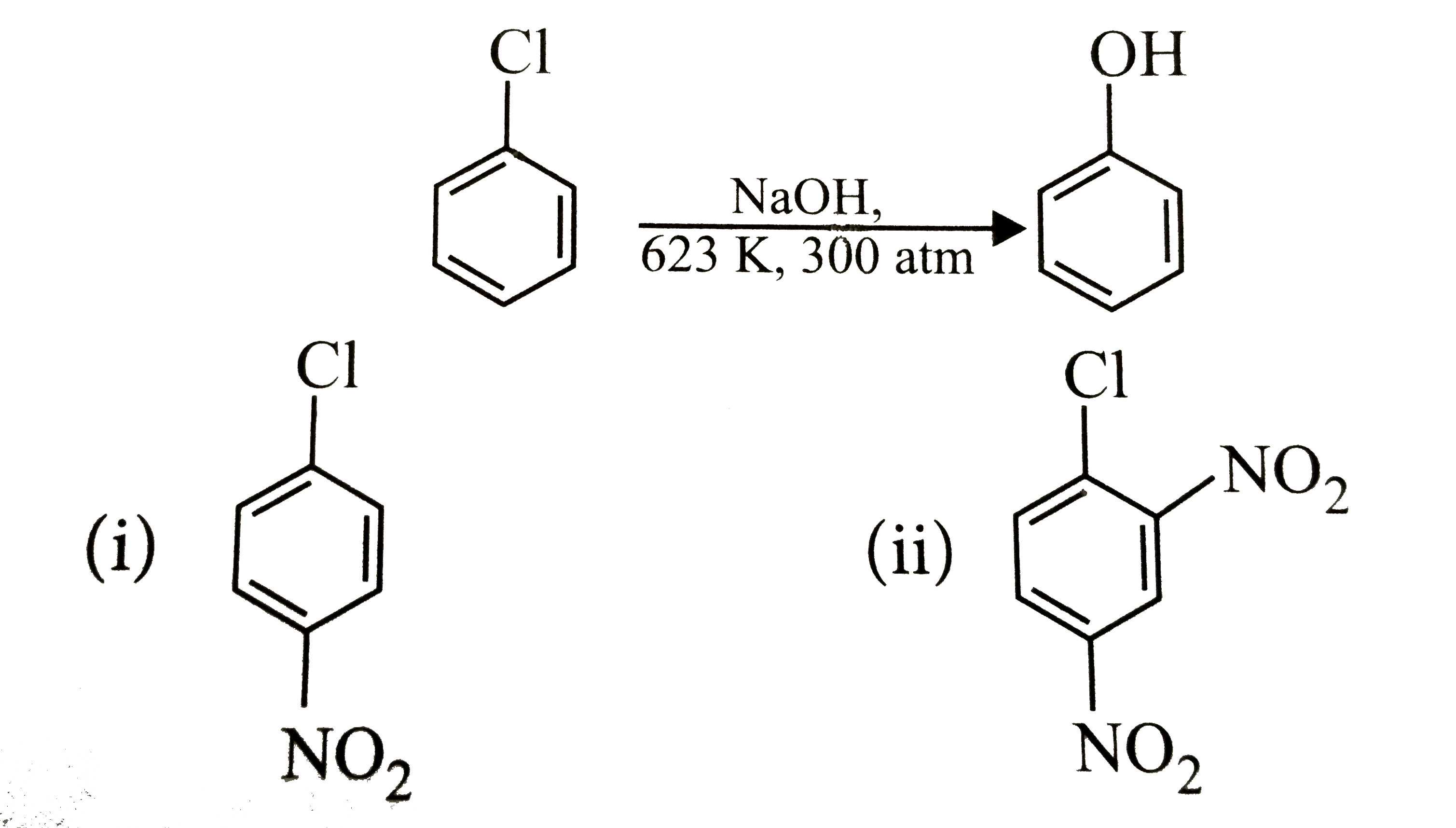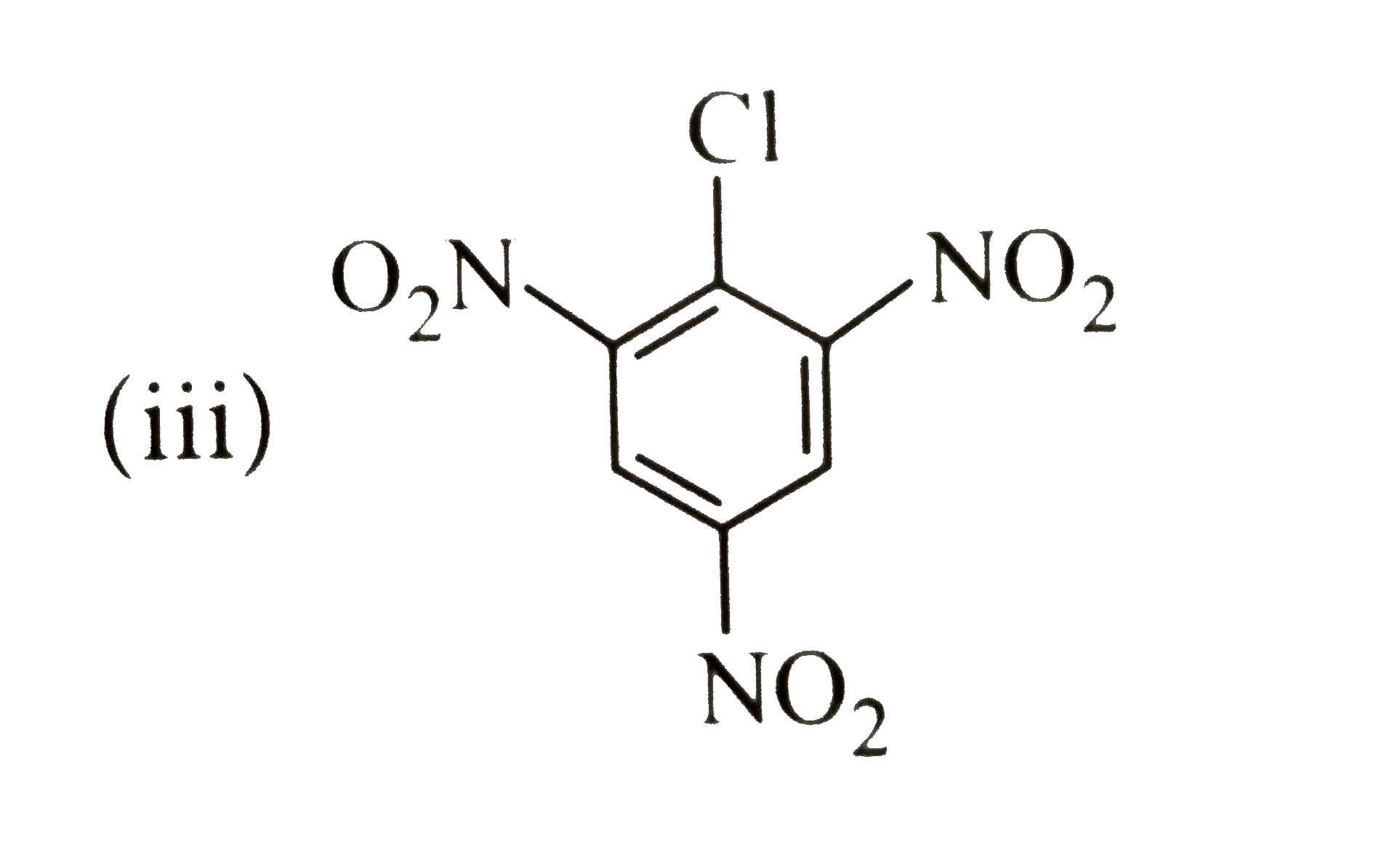How chlorobenzene can be converted into benzene.
To convert chlorobenzene into benzene, we can follow these steps:
Step 1: Reaction with Magnesium
Chlorobenzene (C6H5Cl) is reacted with magnesium (Mg) in the presence of dry ether. This reaction forms a Grignard reagent.
Chemical Equation:
C6H5Cl+Mgdry ether−−−−−→C6H5MgCl
Step 2: Formation of Phenyl Magnesium Chloride
The product formed from the first step is phenyl magnesium chloride (C6H5MgCl), which is a Grignard reagent.
Step 3: Hydrolysis
The Grignard reagent (C6H5MgCl) is then treated with water or an acid (like dilute HCl) to undergo hydrolysis. This step converts the Grignard reagent into benzene.
Chemical Equation:
C6H5MgCl+H2Oacid−−→C6H6+Mg(OH)Cl
Step 4: Final Products
The final products of this reaction are benzene (C6H6) and magnesium hydroxide chloride (Mg(OH)Cl).
Summary of the Reaction:
1. Chlorobenzene reacts with magnesium in dry ether to form phenyl magnesium chloride.
2. The phenyl magnesium chloride undergoes hydrolysis to yield benzene and magnesium hydroxide chloride.
Final Reaction:
C6H5ClMg, dry ether−−−−−−−−→C6H5MgClH2O−−→C6H6+Mg(OH)Cl
---
Chlorobenzene (C6H5Cl) is reacted with magnesium (Mg) in the presence of dry ether. This reaction forms a Grignard reagent.
C6H5Cl+Mgdry ether−−−−−→C6H5MgCl
The product formed from the first step is phenyl magnesium chloride (C6H5MgCl), which is a Grignard reagent.
The Grignard reagent (C6H5MgCl) is then treated with water or an acid (like dilute HCl) to undergo hydrolysis. This step converts the Grignard reagent into benzene.
C6H5MgCl+H2Oacid−−→C6H6+Mg(OH)Cl
The final products of this reaction are benzene (C6H6) and magnesium hydroxide chloride (Mg(OH)Cl).
1. Chlorobenzene reacts with magnesium in dry ether to form phenyl magnesium chloride.
2. The phenyl magnesium chloride undergoes hydrolysis to yield benzene and magnesium hydroxide chloride.
C6H5ClMg, dry ether−−−−−−−−→C6H5MgClH2O−−→C6H6+Mg(OH)Cl
Topper's Solved these Questions
- HALOALKANES AND HALOARENES BOOK - ICSECHAPTER - HALOALKANES AND HALOARENES EXERCISE - ISC EXAMINATION QUESTIONS
4 Videos
- HALOALKANES AND HALOARENES BOOK - ICSECHAPTER - HALOALKANES AND HALOARENES EXERCISE - MULTIPLE CHOICE QUESTIONS
29 Videos
- HALOALKANES AND HALOARENES BOOK - ICSECHAPTER - HALOALKANES AND HALOARENES EXERCISE - EXERCISE (PART - II DESCRIPTIVE QUESTIONS) (SHORT ANSWER QUESTIONS)
94 Videos
- GENERAL PRINCIPLES AND PROCESSES OF ISOLATION OF ELEMENTS BOOK - ICSECHAPTER - GENERAL PRINCIPLES AND PROCESSES OF ISOLATION OF ELEMENTS EXERCISE - EXERCISE (PART-I ( OBJECTIVE QUESTIONS )) (Fill in the blanks)
60 Videos
- ISC QUESTION PAPERBOOK - ICSECHAPTER - ISC QUESTION PAPEREXERCISE - PART-II(SECTION-B)
74 Videos
Similar Questions
Knowledge Check
Benzene can be obtained by :
AC6H5OH+NaOHCuO−−→ΔBC6H5OH+ZnΔCC6H5−N=N−Cl+H2O→DAll of theseAcetone can be converted into pinacol by:
AMg/Hg/H2OBZn/Hg/HClCNa/Hg/H2SO4Dall of these
How chlorobenzene can be converted into diphenyl.
View SolutionBenzenediazonium chloride can be converted into benzene on treatment with:
View SolutionChlorobenzene can be converted into phenol by heating in aqueous sodium hydroxide solution at temperature of 623K and a pressure of 300atm. However the rate of reaction can be increased by presence of certain groups in benzene ring. What will be the order of reactivity of following compounds towards the above substitution reaction?


View SolutionBenzene can be converted to isopropyl benzene (Cumene) by the following reagent.
View SolutionHow fluoride can be converted to fluorine?
View SolutionConvert :
Ethyne to benzene
View Solution
